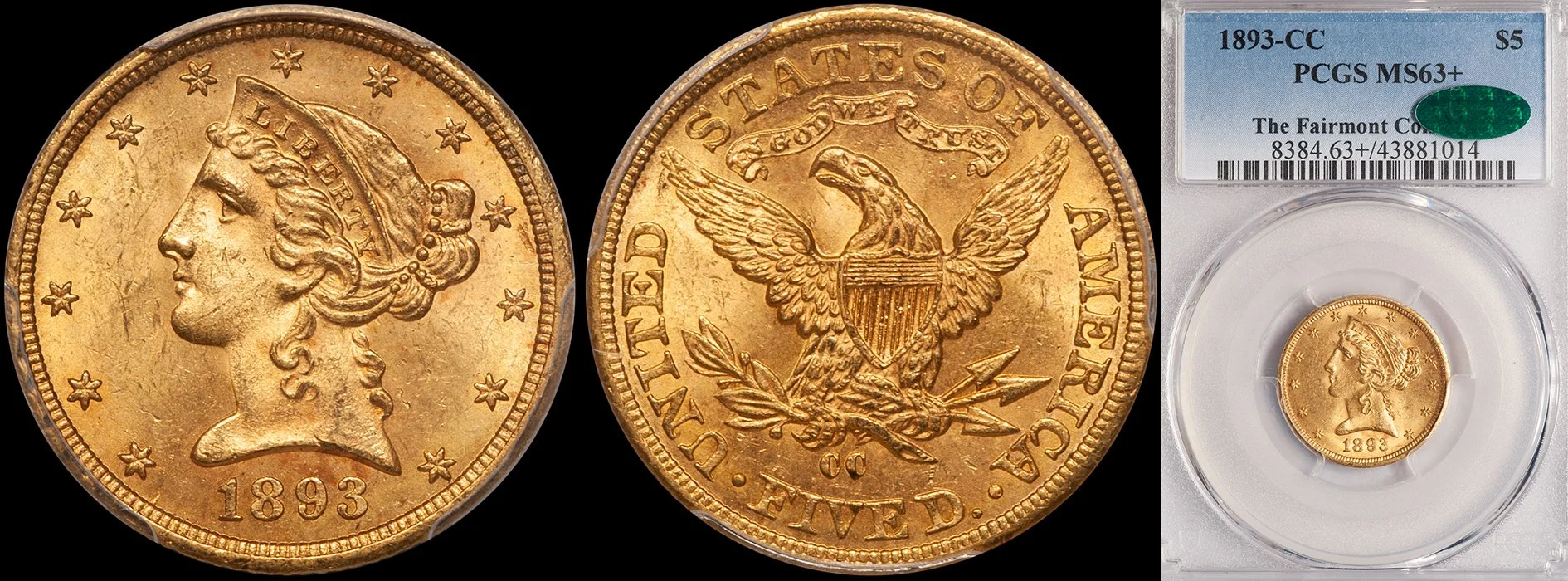ValueQuest 2009
/I have the feeling that the Numismatic Buzzword for 2009 is going to be “value.” If you are like most collectors, your purchases in the coming year(s) are not going to be as extensive as they were in the past. If you are buying fewer coins, you’ll want to stretch your coin purchasing dollars and look for pieces that offer the biggest bang for the buck. I have a few suggestions, which are mainly conceptual in nature, to guide you along the Value Trail. Regardless of series, date or mint, coins that have a nice, original appearance are very rare. My definition of “original” is a coin that appears to not have been cleaned, dipped, processed or otherwise enhanced in recent generations. In many series, especially ones like early gold and southern branch mint gold, truly original coins probably represent less than 5% of the available population. If you don’t believe me, take a look sometime at a large auction that is held in conjunction with a major convention. Assuming that you know what you are looking for, my guess is that you’ll see coin after coin that is too bright or bleached out or bedecked with “unusual” coloration. In some sales there may be thirty or forty early gold coins and only a small handful that fit my criteria of originality.
It makes sense to me that if you are going to buy fewer coins in 2009 (or, who knows, maybe you won’t buy fewer coins, just less expensive ones...) you should be buying prettier, more aesthetically appealing ones. And one of the things that I am continually amazed about in the rare date gold market is that, when they are available, choice, original pieces tend to only bring a small percentage (10-20% at most) over the typical “schlock” that is usually offered.
Another important point to consider when purchasing coins with a newfound appreciation for value is current market price versus prices in 2002-2003. I use 2003 as the point in time that prices in many gold series began to rise significantly. As an example, many early gold coins that were worth $6,000-8,000 in 2002-2003 had been at that level for quite a few years. Today, these same coins may be worth $10,000-12,000 or even more in some cases.
If you own stocks, you are probably well aware of the fact that the drops in the market since early September have basically eroded all stock profits achieved in the last five years. While the coin market has, so far, held its value far better than I would have expected, it is certainly a possibility that today’s $10,000 coin could certainly drop to $6,000 in a fairly short period of time. By studying the past history of specific subsections of the market, the value- conscious collector should have a clearer idea of potential downside.
There are actually a number of rare date gold coins that are worth the same today as they were in 2002-2003. Examples include very high grade Charlotte and Dahlonega issues (in this case MS63 and above), many San Francisco issues from the 1850’s, 1860’s and 1870’s and even a number of New Orleans gold coins. The reasons for this range from the market being damaged by too many overgraded coins in holders (in the case of Charlotte and Dahlonega pieces) to collector indifference (in the case of the San Francisco coinage) to poor reporting of prices by Trends and CDN (in the case of New Orleans issues).
Just because a coin was worth $5,000 in 2003 and it is worth the same today does not mean that it offers the “best” value to a buyer in 2009. But, it is interesting to ponder if coins such as this might have less downside than areas of the market that have shot up considerably.
Which brings us to the third and final point to consider in our Valuequest 2009. Liquidity is likely to be a huge factor in the coin market in the coming year(s). This is probably no time to be “cute” when it comes to your coin purchases. My guess is that coins that had limited appeal and liquidity issues in the good market of 2003-2008 might have virtually no appeal and liquidity in the potentially-not-so-good market of 2009 and beyond. In other words, key dates may drop in price somewhat but they are still likely to have a lot of collector demand. And to use an analogy from the non-gold coin market, series such as Three Cent Nickels, Shield Nickels and Liberty Nickels have and will probably always be also-rans because they are just not especially interesting in the opinion of most collectors.
So, in summary, I believe that three of the key elements that will drive the market in 2009 are originality, current price levels versus pre-bull market prices and liquidity/popularity. These were obviously key elements in years past but with the market euphoria of the past not likely to be seen for awhile, I think they will be more important than ever.










